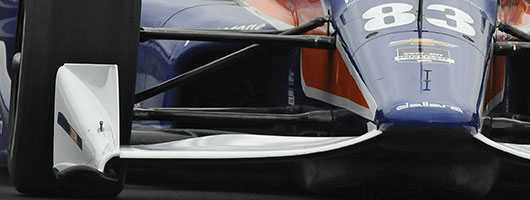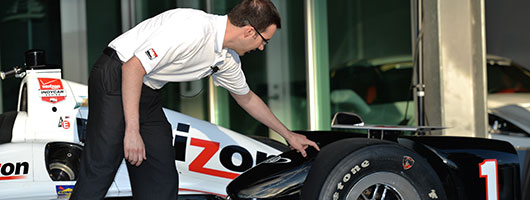Glad you asked: Indy 500 aero package primer
MAY 11, 2015
The introduction of Chevrolet- and Honda-developed aerodynamic bodywork platforms for superspeedways and road/street and short ovals has added another exciting dimension to the Verizon IndyCar Series season and the competition between the manufacturers that supply the 2.2-liter, twin-turbocharged V-6 engines.
Both manufacturers have developed visually distinctive, performance-enhancing aerodynamic packages for use by their respective teams.
"It's really interesting to see two manufacturers approach their development and their output choosing different approaches," Honda Performance Development COO and vice-president Steve Eriksen said. "I think in the same way we've gone about building or respective engines through ways and means that are part of our core beliefs, aero kits are much the same."
The 99th Running of the Indianapolis 500 is the first race for the superspeedway packages. Here’s a primer:
Q. Is an entry allowed to use the Dallara bodywork kit from 2014.
A. Yes, though 2012-14 Dallara components cannot be intermingled with either the Chevrolet or Honda superspeedway packages.
Q. What was open for development in the superspeedway aero kit.
A. Manufacturers were allowed to develop front and rear wing endplates, sidepods, engine covers, rear-wheel guards, front and rear wing main planes and rear wing main plane pillar(s). Each component has to fit inside designated “volume boxes” as specified by INDYCAR. A team has the option to use its manufacturer rear wing main plane and/or the Dallara main plane in practice.
“Innovative designs were used to develop the right combination of downforce and drag, along with engine performance,” Chevrolet IndyCar program manager Chris Berube (in photo below) said.
Q. What else is new.A. A triangular cutout on both sides toward the front of the underwing of the chassis complements the aero kits. They were added to reduce the overall surface area of the bottom of the race car, which reduces the chance of lift during an incident.
Q. Are there areas the teams can tweak during practice for use in qualifying.
A. Yes, there a multiple options that can be added/removed from the components, such winglets and flicks. All aero parts have to be able to fit at the same time. Also, options can be asymmetrical if a team/driver wishes to experiment.
Q. What is the reason for options.
A. Aero kits allow multiple combinations of elements to suit the strategy and preferences of each team and driver relative to a specific racetrack. Mixing and matching these elements presents challenges to both manufacturers and team race engineers to find the right combination of downforce vs. drag for optimum performance during qualifications and the race.

Q. Will there be differences between the qualifying set-up and race set-up.
A. Yes, between manufacturers and likely between teams aligned with the same manufacturer. Drivers will decidedly trim out (lessen drag) the car for qualifications and add downforce for more stability over the long race distance.
"In qualifying for Indy you might put on all your lowest drag optional components or choose to emit components, and then for the race you might decide there is some sidepod winglet that might give you better handling characteristics or is more efficient," INDYCAR director of aerodynamic development Tino Belli said.
Q. What is the weight of the superspeedway aero kit.
A. It must be not less than 53 pounds. Minimum car weight is 1,570 pounds, minus fuel, driver and driver equivalency weight.
Q. What was the price of a complete aero kit.
A. Per entry, the price tag was agreed upon by INDYCAR and the manufacturers at $75,000. Upgrades in subsequent years will be priced at $15,000 per entry.

















